Astrobiology is the study of the origin, evolution, and distribution of life in the universe, including the possibility of life beyond Earth. While Earth remains the only known planet to harbor life, our solar system offers a variety of environments that could potentially support life. Advances in space exploration, combined with discoveries of water, organic molecules, and other key ingredients, have raised intriguing questions about the potential for extraterrestrial life. In this blog, we’ll explore the main candidates for life in our solar system, examining their environments, the scientific evidence, and the challenges we face in finding life elsewhere.
1. The Conditions for Life
Before we dive into the potential habitats for life within our solar system, it’s important to understand the conditions necessary for life as we know it. Life, on Earth and potentially elsewhere, requires a set of conditions that include:
– Water
Water is essential for life as it is a universal solvent that facilitates biochemical reactions. For life to exist, liquid water must be present, or at least have been present in the past. While Earth is abundant with liquid water, scientists have found evidence of water in other forms across the solar system, particularly in ice or vapor, and in some cases, liquid water is believed to exist beneath the surface of some moons and planets.
– Energy
Life needs energy to thrive. On Earth, sunlight serves as the primary energy source for photosynthetic organisms, but there are other ways life could harness energy. Chemical energy, particularly from volcanic activity or hydrothermal vents, is a key energy source in some of Earth’s most extreme environments. In the absence of sunlight, organisms can rely on chemical processes to derive energy.
– Chemical Building Blocks
The basic building blocks of life—carbon, hydrogen, nitrogen, oxygen, phosphorus, and sulfur—are common in the universe. These elements are necessary to form the complex organic molecules like amino acids, nucleotides, and lipids that make up life. These elements are also abundant in the solar system, particularly in the form of organic molecules detected on various planetary bodies.
With these conditions in mind, let’s examine some of the most promising places in our solar system where life could potentially exist.
2. Mars: The Search for Life on the Red Planet
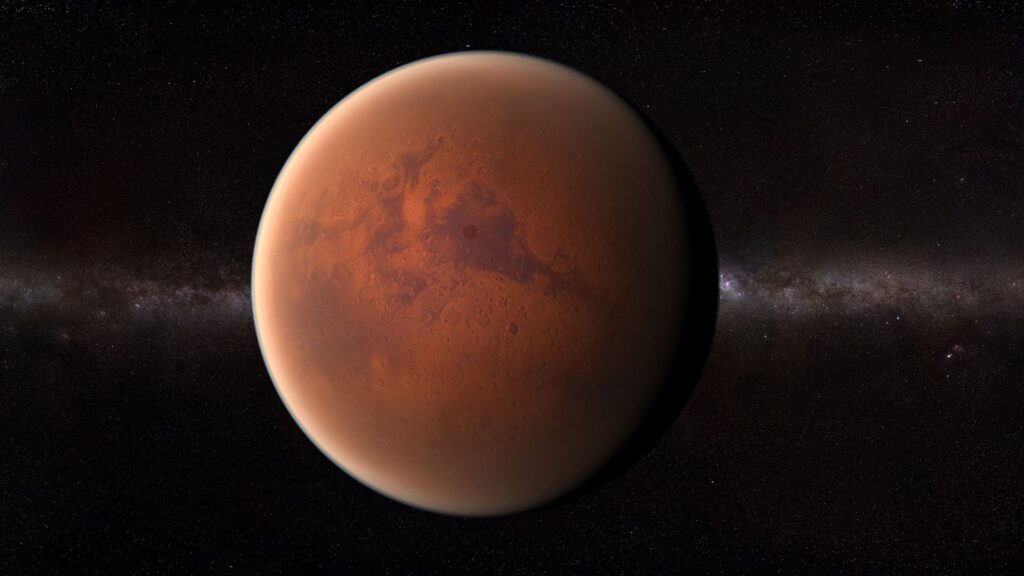
Mars has long been considered one of the most promising places to search for extraterrestrial life. Though the planet is inhospitable today, there is strong evidence that it was once much more Earth-like, with liquid water on its surface.
– Evidence of Past Water
Mars has vast regions with signs of ancient riverbeds, lake beds, and even oceans, indicating that liquid water once flowed across its surface. Most notably, the discovery of minerals like clay and sulfates, which form in the presence of water, points to a wetter past. If life existed on Mars, it likely thrived during this time.
– Water Ice and Briny Water
Today, Mars’ surface is cold and dry, but water still exists in the form of ice, particularly at the poles. In some regions, scientists believe that there may be briny liquid water trapped beneath the surface, kept liquid by pressure and warmth from the planet’s interior. Evidence from the Mars Reconnaissance Orbiter suggests that seasonal streaks, known as recurring slope lineae (RSL), might be caused by briny water flowing down Martian slopes.
– Methane and Organic Molecules
Methane has been detected in Mars’ atmosphere, with concentrations varying over time. Some scientists believe that the methane could be the result of microbial life, as certain bacteria on Earth produce methane as a byproduct. In addition, organic molecules have been found in Martian soil by NASA’s Curiosity rover. While these could be the result of geological processes, their presence raises the possibility that life once existed on Mars or still exists in some form today.
Mars remains one of the most actively studied planets, with numerous missions focused on understanding its geology, atmosphere, and potential for life. In the coming years, NASA’s Perseverance rover and the upcoming ExoMars mission will continue the search for signs of life, past or present.
3. Europa: An Ocean Beneath the Ice
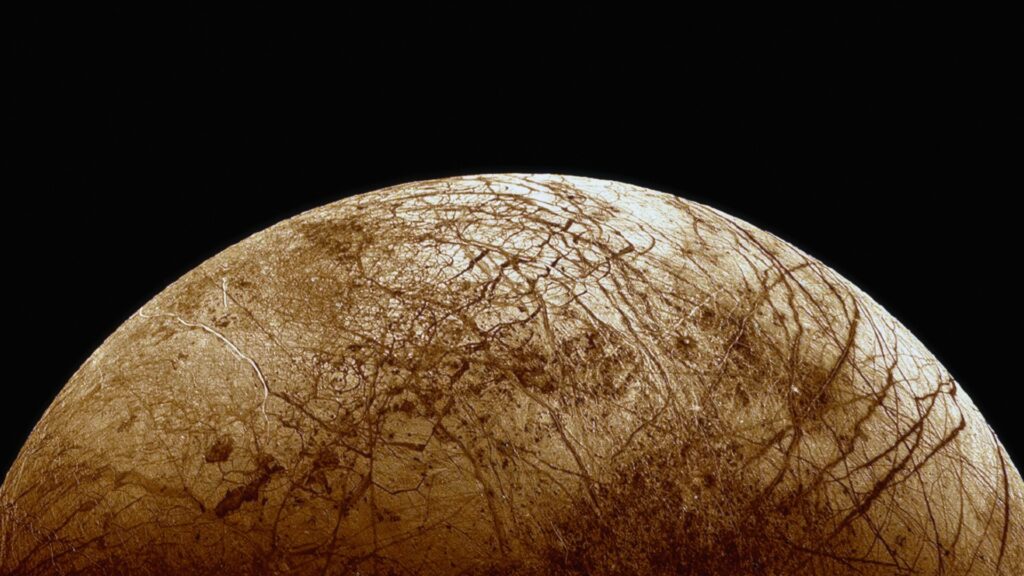
Europa, one of Jupiter’s largest moons, is another prime candidate in the search for extraterrestrial life. Beneath its icy crust, Europa harbors a subsurface ocean, and scientists believe that this ocean may have the potential to support life.
– Subsurface Ocean
Europa’s surface is mostly composed of water ice, but beneath this thick crust lies a liquid ocean that could be in contact with the moon’s rocky mantle. Tidal forces from Jupiter’s gravity generate enough heat to keep the ocean liquid, despite the moon’s frigid surface temperatures. This ocean is believed to be salty and may have conditions similar to Earth’s deep-sea hydrothermal vents, where life thrives without sunlight.
– Hydrothermal Vents and Organic Chemistry
Europa’s ocean may contain hydrothermal vents on its seafloor, similar to those found on Earth. These vents release minerals and chemical compounds that could provide an energy source for microbial life. In addition, Europa’s surface contains complex organic molecules, which are the building blocks of life. The combination of liquid water, chemical ingredients, and energy sources makes Europa a strong candidate for hosting microbial life.
In the coming decade, NASA’s Europa Clipper mission will launch to explore this moon in greater detail, searching for signs of habitability and potential life.
4. Enceladus: Water Plumes and Organic Compounds
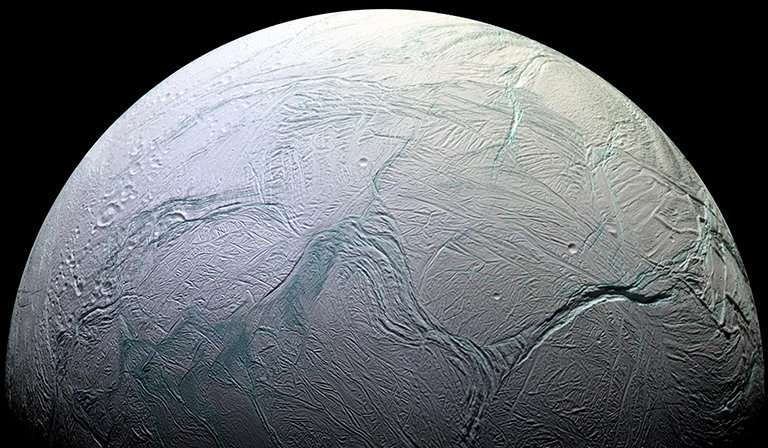
Enceladus, one of Saturn’s moons, has also emerged as a promising location for life. Like Europa, Enceladus has a subsurface ocean, but what makes this moon particularly intriguing is the discovery of water vapor plumes erupting from its surface.
– Water Plumes
Enceladus has geysers that shoot water vapor, ice, and organic molecules into space. These plumes suggest the presence of liquid water beneath the icy surface. Data from NASA’s Cassini spacecraft confirmed that the plumes contain a variety of organic molecules, including simple hydrocarbons and amino acids—important ingredients for life.
– Hydrothermal Activity
Like Europa, Enceladus may have hydrothermal vents on its ocean floor, which could provide the necessary conditions for life to survive. The ocean may be in contact with the moon’s rocky interior, where chemical reactions could supply energy to potential microbial life.
Enceladus is one of the most exciting targets for astrobiology research. The discovery of organic compounds in the plumes adds to the tantalizing possibility that life could exist, or may have existed, in the subsurface ocean.
5. Titan: An Alien World with a Unique Chemistry
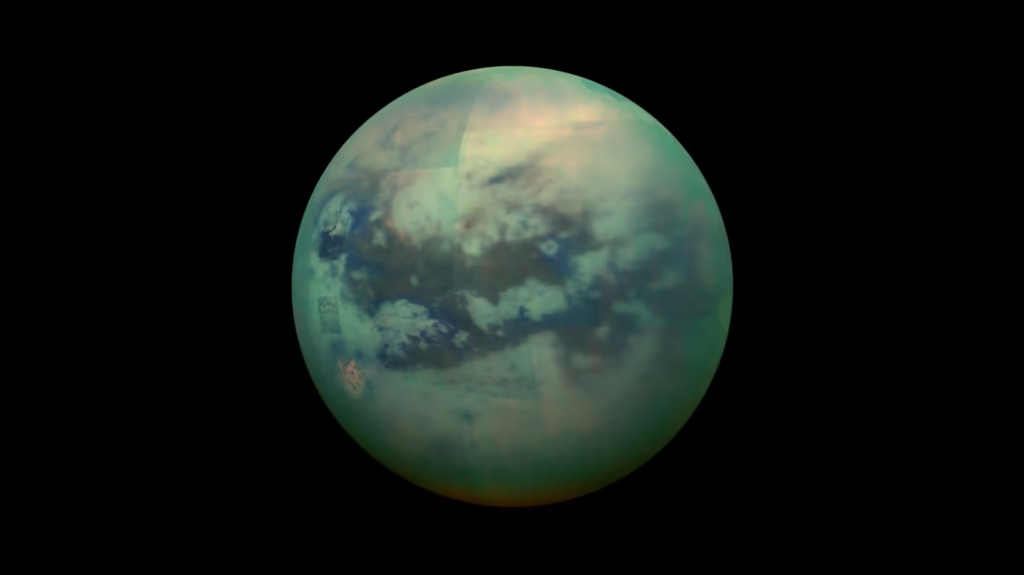
Titan, Saturn’s largest moon, is a vastly different environment from the others discussed, but it still remains a subject of astrobiological interest. Titan has a thick atmosphere and liquid lakes, but these lakes are made of methane and ethane rather than water.
– Surface Chemistry
Titan’s thick atmosphere contains complex organic molecules that are created by sunlight and cosmic rays. The surface of Titan is cold, around -290°F (-179°C), and liquid water cannot exist, but liquid methane and ethane can. Scientists speculate that life on Titan, if it exists, could be based on methane rather than water, using different biochemical pathways from what we know on Earth.
– Potential for Life
Although Titan’s surface chemistry is alien to Earth’s, there are still intriguing possibilities. The liquid methane lakes could provide a medium for life to form and develop in ways we can’t yet fully understand. Titan’s atmosphere, rich in nitrogen and organic compounds, may offer a potential environment for life to emerge through completely different processes than those we are familiar with.
NASA’s Dragonfly mission, set to launch in the mid-2030s, will explore Titan further and investigate whether it could harbor the ingredients for life, in a form radically different from what we know on Earth.
6. Venus: An Unexpected Candidate
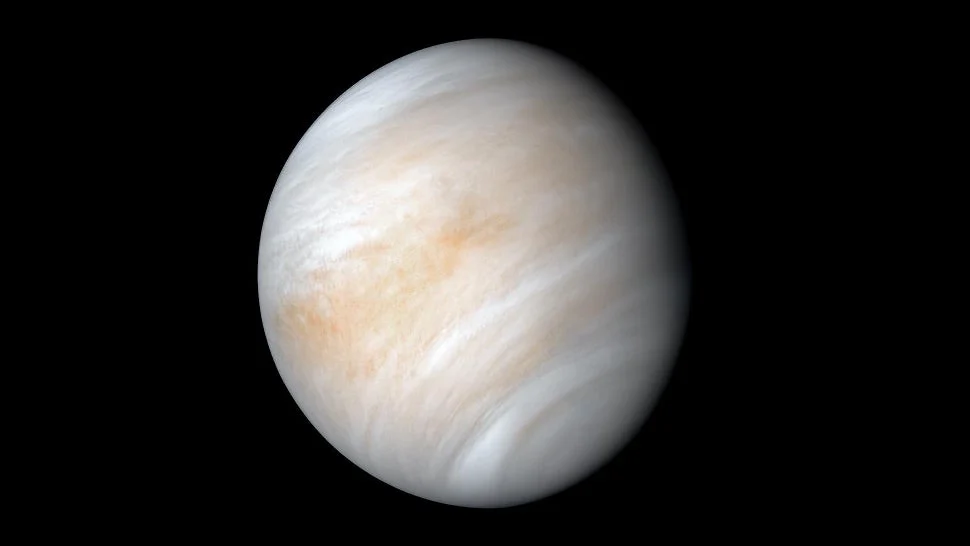
Venus is often considered an unlikely candidate for life due to its extreme surface temperatures and high pressure. However, recent discoveries have rekindled interest in the planet’s potential for hosting life.
– Phosphine Discovery
In 2020, scientists detected phosphine in Venus’s upper atmosphere. On Earth, phosphine is associated with microbial life, and its detection on Venus raised the possibility of microbial life existing in the planet’s cloud decks, where temperatures are more temperate (around 86°F or 30°C). While this discovery is still debated, it has prompted renewed interest in the idea that life could exist in the cloud layers of Venus, where conditions might be more favorable than on the scorching surface.
Conclusion: The Search for Life Continues
While we have yet to find definitive evidence of life beyond Earth, the discovery of water, organic molecules, and energy sources on various planets and moons in our solar system offers hope. Mars, Europa, Enceladus, Titan, and even Venus are among the most promising candidates in the search for extraterrestrial life. As space exploration advances, missions like the Perseverance rover on Mars, the Europa Clipper mission, and the Dragonfly probe to Titan will continue to explore these worlds, increasing our understanding of their potential to harbor life.
Astrobiology is one of the most exciting and rapidly developing fields in science, and each new discovery brings us closer to answering one of humanity’s oldest questions: Are we alone in the universe?



